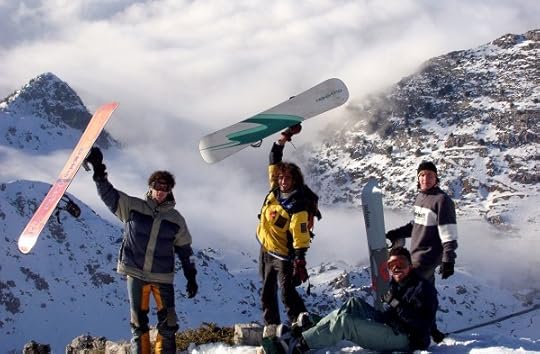Matador Network's Blog, page 2241
July 18, 2014
Aussie friend vs. normal friend

Photo: Wouter Walmink
1.
A normal friend will always be respectful.
An Aussie friend will affectionately call you a bastard, dickhead, or whatever their particularly favorite derogatory term might be.
2.
A normal friend might show some concern if this is your third night in a row drinking a six-pack.
An Aussie friend will gladly sit along and drink with you at any time of day.
3.
A normal friend would never think to pay you off with alcohol.
An Aussie friend will give you a tipple for any small favor you perform for them. Helping a friend move will at least garner a six pack or a slab.
4.
A normal friend will whip you up something to eat when you’re feeling bad.
An Aussie friend will whip you up something surprisingly simple and delicious and serve it with a “cuppa” or a glass of red wine.
5.
A normal friend always says “thank you.”
An Aussie friend never says “thank you.” They might say “ta.” But how good of a friend can you be if you have to be polite?
6.
A normal friend will say “excuse me.”
An Aussie friend will say “pardon me” or “beg yours.”
7.
A normal friend will call you by your preferred name.
An Aussie friend will shorten your name or add an ‘o’ to the end of it, whether you like it or not.
8.
A normal friend will cancel an appointment.
An Aussie friend will pike.
9.
A normal friend will recommend some fast food.
An Aussie friend will recommend a local independent takeaway or something cheap and cheerful.
10.
A normal friend will ask if you’re serious.
An Aussie friend will say “you’re dreamin’.”
11.
A normal friend will ask if you’re sick if you take a day off from work.
An Aussie friend will ask you if the surf was good after “chucking a sickie.”
12.
A normal friend has their own personal comfort food.
An Aussie friend has Vegemite and toast.
13.
A normal friend will tell you which state they’re from.
An Aussie friend will say they’re from ‘Straya (unless they’re from Sydney or Melbourne).
14.
A normal friend will build your confidence and nurture your self-esteem.
An Aussie friend will cut you down like a tall poppy in the wind. 

11 signs you're from Alaska
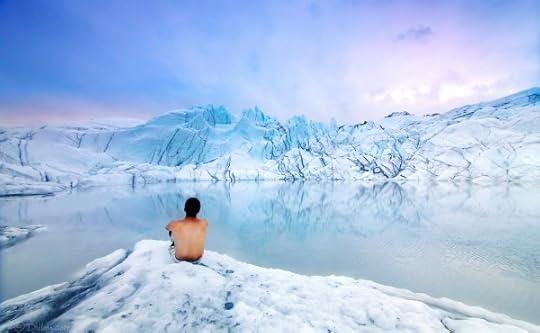
Photo: Dhilung Kerat
1. You never say the words “Aurora Borealis.”
But you do mention the Northern Lights in two specific situations:
First, in response to the scientifically accurate yet orally laborious “Aurora Borealis” by retorting, “Oh, you mean the Northern Lights?” (Alaskan for, “Ain’t from here, are ya?”)
And second, when saying “I was out on Northern Lights,” which indicates that you visited (or drove by) the store that makes every outdoorsy, granola, sock-clad, Birkenstock-wearing Alaskan heart swoon: REI.
2. You have mixed feelings about “bunny boots.”
“Bunny boots” conjure up all sorts of warm fuzzy hops down Nostalgia Lane. You have a sort of love-hate relationship with those winter boots with the bulbous toes, white outer rubber, and funky side air valves.
Originally a military thing (they’re officially called “extreme cold vapor barrier boots”), you hijacked your first pair from your dad. You wore them to tromp around the house as a wee thing, and then later to begrudgingly trek from house to woodpile in -30°F weather once you got old enough to be sent outside for firewood.
3. Your family owns a lot of vehicles and their accompanying accessories.
At least seven of the following are counted among your assets (friends’ and neighbors’ belongings included): a trailer(s), a camper, a motorhome, a 3-wheeler, a 4-wheeler, a 5th wheel, a snow machine, a snowblower, a bobcat, a 2-door truck, a 4-door truck, an SUV, a minivan, a 4WD, a 2WD, a bus, an airplane, a boat, a dinghy, a canoe, a Zodiac, a kayak, a mountain bike, a bike rack, a ski rack, a boat rack, and a dog sled.
And that’s just the starter kit.
4. You know what Fur Rondy is.
And you look forward to it all winter. The annual winter festival has roots in the 1930s and was designed to help encourage Alaskans like yourself to soldier on until spring.
This is the time of year you don your fur garments (handmade by Alaska Natives or David Green Master Furrier) to attend the Miners & Trappers Ball at the Egan in downtown Anchorage. You visit snow sculptures and freeze your toes off watching fireworks atop the Penny’s parking garage. You observe the parade curbside in sub-zero temperatures as your fingers and nose become ice pops, and vow “never again,” even though you come back every year. You wonder if there’ll be enough snow for the Iditarod, and (if you can produce facial hair), you try for Mr. Fur Face.
5. Raccoon eyes are a status symbol.
Cabin fever (aka spring ski season) meant that you conned your folks into letting you skip school. Then you hit the slopes at Alyeska, Arctic Valley, Hatcher’s Pass, or headed to a cabin via snow machine.
Afterwards, you returned to your classroom with the ever-so-envied “raccoon eye” tan, signaling 1) that you played hooky and your parents knew, 2) you are awesome, and 3) the cast, brace, or stitches you earned doing some crazy stunt just exponentially upped your awesomeness. All hail the raccoon-eyed snow warrior!
6. The word “vacation” only means Hawaii or Mexico.
You love Alaska, but you also love your vacations “outside.” Especially because vacations mean you’re Hawaii- or Mexico-bound to get some sun. You thought raccoon eyes were a status symbol? Try coming back to school with a real tan.
7. You have at least one good bear story.
You love it when people from the “lower 48″ come up. You chaperone them while camping, hiking, and fishing. You visit the Alaska Zoo, contemplate the bear enclosures, and nonchalantly say, “I remember that one time when I was three feet from this big ‘ole grizzly and suddenly…”
Then, at Fred Myers, you plunk a box or two of Wild Alaska Smoked Salmon, a sampler box of Alaska Wild Berry Products jam, and a copy each of Alaska Bear Tales and More Alaska Bear Tales into their shopping cart as departure gifts. Your guests leave on a long flight home, pondering Alaskan courage in the furry face of death.
8. There were lots of weapons in your home.
You need weapons like your vehicles need gasoline. Growing up, you learned about guns, knives, bear spray, and bows and arrows. You received one (or several) of these as a gift, and your parents taught you to use them out back. You didn’t always make the smartest decisions regarding the aim of these “tools” as a youngster, but you were raised with a healthy understanding of their purpose.
You grew up overhearing your parents’ bear stories, you watched news reports on bear attacks (but you cheered for Binky when he got that lady’s shoe), and you read a few bear-attack books. You’re down with having weapons in your home, and anyone who thinks otherwise isn’t Alaskan.
9. You can easily identify which river anglers are tourists and which are locals.
For the outdoor enthusiast, Alaska is hallowed ground. You get it. It’s pristine, beautiful, awe-inspiring, and you can’t help feeling smug about being Alaskan. Especially when it comes to tourists on the rivers you’ve been frequenting since before you were born. Oh yes! You were down there in your mom’s belly just hanging out while she relished her last opportunities to fish in peace without a little human lamenting every 36.2 seconds, “Mommy, help. I’m stuck / tangled.”
You know that bobbers on the line are ONLY for kids. You know that Alaskan salmon won’t typically bite the hook. You never use bait. You’ve perfected your own “hook ‘em in the mouth” technique, and added your own special brand of finesse over the years. You never consider doing anything with the scarlet salmon beyond catch and release. Salmon fishing without polarized sunglasses is only an option if you fell in earlier in the day and lost them. You make your own lures for keeping track of your hook in combat fishing zones. You catch your limit when there “aren’t any” fish in the river, and you wisely carry some kind of weapon (NOT a bell) in case you run into a bear or the bear runs into you.
10. You started fishing before you could talk.
You rode on your mom or dad’s back in a baby backpack from fishing hole to fishing hole, getting “ate up” by mosquitoes. Your parents bought you a kid-sized pole and taught you to cast when you started walking. They would cast your line, magically get a fish on, give you the pole, grab a camera, then “help” you reel in the first catches of your angling career.
Starting with minnows, lake trout, dolly varden, grayling, and of course, stock trout at the Great Alaska Sportsman Show kiddy pool, you worked your way up the fish chain to snagging “big old red” salmon before ultimately mastering the skills you possess today.
11. You’re a food snob.
Maybe not a foodie in the traditional sense, but you have standards. You know fish. And by fish, you specifically mean wild Alaskan sockeye, silver, king salmon, and halibut. Hearing that today’s catch of the day is “fresh pink salmon” or “farm raised” anything is an incorrigible insult to your tender Alaskan soul. The same goes for crab. Alaska King Crab — those three words begin and end all discussions about crab.
When comrades mention Saturday Market’s “salmon quesadillas,” you immediately salivate. Conversations about moose teeth inspire dreams of gourmet pizza. And come Alaska State Fair time, you know that visiting the Indian Valley Meats booth for a spicy Reindeer Polish Sausage Dog and the Pristine Products counter for fresh Prince William Sound Oysters are non-negotiables. 

Are these ruins Sochi's future?

All photos by author
In 1984, the very first Winter Olympics taking place in a communist state was held in the unique and remarkable city of Sarajevo — then a thriving metropolis in the now-defunct host nation Yugoslavia, now the modern capital city of Bosnia and Herzegovina. In 2014 — 30 years after the Sarajevo Winter Olympics — the seaside Russian city of Sochi also held the attention of television viewers, in the way only a former communist nation in a world entranced by Western media can, as it played host to the XXII Olympic Winter Games.
Yugoslavia doesn’t exist anymore, except in the minds of Yugo-stalgic lovers of all things Tito. Bosnia and Herzegovina is a democracy. Russia has given communism the flick, moving toward a decidedly more corporatocracy. And the cities of Sochi and Sarajevo share something else in common — an abandoned Winter Olympic site. As Sochi begins its inevitable decay, perhaps the abandoned Winter Olympic bobsled track high on Mount Trebević above Sarajevo will be an eerily accurate bellwether for Sochi’s Imeritinsky Beach.
At the time, a record 49 nations participated in the 1984 Winter Olympics. Tens of thousands of spectators covering Mount Trebević cheered on the brave Sarajevo bobsled and luge competitors, as they raced down the 1.3km track at speeds of over 100 km/h, in snowy, blustery conditions. For several years after the Olympics, the Sarajevo bobsled track was used for world cup competitions. And then came the rub. When 1991 rolled around, the ugly and complex Yugoslav wars commenced, and the Olympic bobsled location was utilised by military forces as an artillery position.
By 1992, just eight years after the very peaceful Winter Olympics, the city of Sarajevo became victim of the longest military siege in modern history. Sarajevo was cut off from the world and relentlessly bombarded by forces who had now overtaken the hills surrounding the city. Residents had little chance of escape, as over 5,000 civilians were killed by rockets and mortars from above and snipers within the downtown streets of Sarajevo. The Olympic fields became killing fields, and television viewers around the world were again focused on Sarajevo. This time, bobsleds and figure skating had been replaced by the uneasy voyeurism of death and destruction, televised to audiences around the world, remote control in hand.
Understandably, for those in Sarajevo, preservation of the Olympic bobsled track took a backseat to things like water, food, medicine, and survival during an unimaginable period of bloodshed. By September 1993, the Sarajevo Winter Olympiad had become a surreal memory from another time and place, and it was estimated that virtually every building in Sarajevo had suffered some degree of damage. During the siege, 35,000 buildings were completely destroyed, in a city of around half a million inhabitants. On one day in July 1993, almost 4,000 shells blitzed the city, all part of a nausea-inducing average of 329 shell impacts for every day of the 1,425-day urbicide.
Today, the Mount Trebević Olympic site is totally abandoned. The vegetation has recovered and is threatening to finally take over the graffiti-strewn and war-damaged concrete bobsled course. Seeing the track gracefully snake its way through hauntingly scenic forest is a sight unlike any other. Now, decaying restaurant buildings only serve up perfect views of the picturesque city below, and the last remaining spectators are the occasional intrepid tourists carefully eyed by roaming packs of stray dogs. This was my third visit to the bobsled track, and each time the weather and season has provided a different experience. It’s otherworldly, serene, mysterious, and has now become strangely familiar.
Comparisons with Sochi are inevitable. Olympic sites around the world, both summer and winter, have a habit of becoming disused not long after the last IOC member has collected his bribe and moved on to greener pastures. However, Sarajevo could have been different. After the 1984 Winter Olympics, the Sarajevo bobsled and luge site remained popular and fully operational. Certainly, if it hadn’t been for years of war that left Sarajevo living under a storm of heavy artillery, the track and Mount Trebević would look very different today. Sadly, the Sarajevo siege upstaged the 16th Winter Olympics. Sarajevo’s fate was not to be remembered as an Olympic city, but as the owner of an unenviable set of 20th-century bookends — the location for the commencement of World War I and a siege without parallel in modern history.
Still, war or no war, my money is on Sochi looking exactly like Mount Trebević by 2024. If not sooner. 
This post originally appeared at Yomadic and is republished here with permission.

July 17, 2014
On the Voyageur Canoe Musical Tour
Editor’s note: Every year, Naturally Superior Adventures in Ontario hosts the Voyageur Canoe Musical Tour, a 90km / 4-day paddle with a featured Canadian folk artist for intimate musical entertainment. This year’s musician is Katherine Wheatley. The musical tour concludes in Red Rock, Ontario, on the opening day of the Live From the Rock Folk Festival (August 8-10).
Last August, MatadorU student Joe Baur participated in the Voyageur Canoe Musical Tour on behalf of Matador as a guest of Ontario Tourism.
* * *
“Those who have never seen Superior get an inadequate, even inaccurate idea by hearing it spoken of as a ‘lake,’” wrote George Grant, a member of the 1872 Fleming Expedition across Canada. “Superior is a sea. It breeds storms and rains and fogs, like the sea. It is cold in mid-summer as the Atlantic. It is wild, masterful and dread as the Black Sea.”
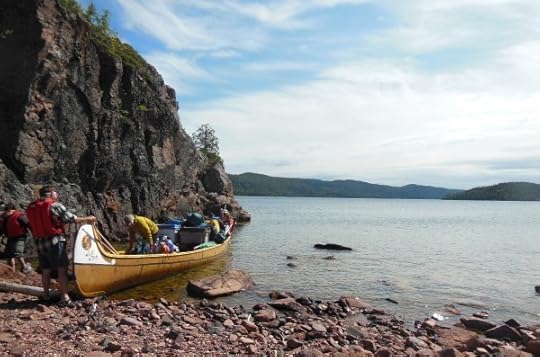
All photos: Author
Surrounded by Ontario, Minnesota, Wisconsin, and Michigan’s Upper Peninsula, Superior is the largest freshwater lake in the world by surface area (third by volume), with more water than the other Great Lakes combined. Superior’s deepest point sits at an impressive 1,265 feet. Native to this land, the Ojibwe tribe calls the lake “gichigami,” or “big water.” Central to the Ojibwe mythology is Mishipeshu, a feline/reptilian deity governing Lake Superior whose name means “the Great Lynx” (Mishipeshu is brilliantly depicted in ancient pictographs attributed to the Ojibwe in Lake Superior Provincial Park).
It has long been tradition that travelers who wish to paddle Lake Superior safely are encouraged to make a tobacco offering to appease Mishipeshu.
The VCM Tour traces the rugged northern shore of Lake Superior, and our group of 12 paddlers (led by the incomparable wise-ass and award-winning folk musician Ian Tamblyn) would eventually land in Red Rock, Ontario, a town of 800, to attend the annual Live From the Rock Folk Festival. Only Ian seemed to know how we were going to pack hundreds of pounds of gear and food onto the 36ft voyageur canoe, leaving enough space for 12 paddlers. Of course, the canoe was packed masterfully.
But before we could dip our paddles into Superior and begin our journey, Ian — donning a First Nations cap with an image of the lake god Mishipeshu — approached the water and made the customary offering of tobacco.
Ian Tamblyn is not only an award-winning folk musician with a number of plays and adventure travel expeditions under his belt, he was also the avant of our canoe — the paddler at the front of the boat. As we paddled the lake’s rocky edge, Ian would call out breaks and occasionally questions the rudder’s efficiency and direction. But he did so in a friendly Canadian folk singer sort of way.
* * *
Book your spot on the Lake Superior Voyageur Canoe Musical Tour.



9 reasons to give SUPing a try

Photo: David_Kerwood
I CAME ABOUT stand-up paddle (SUP) boarding the same way I came about the majority of my college drug experiences: I’d never done it before, but I had heard good reviews. So I just bought one because I was pretty confident that I’d be a happy customer. This method hasn’t always worked for me. But it did work with SUPing.
1. You’re probably not going to fall.
If you have a basic grasp of walking and you’ve conquered a few hopscotch games in your day, there’s a good chance you will not hurt yourself on a SUP board.
Sometimes you come up against sudden winds or whitecap conditions. Seeing as you are basically acting as a giant mast, this can be terrifying. When I’m terrified, as a rule, I just sit down. An expert paddler once told me this was a pussy-move. She can shut it. Let’s move on.
2. You’ll get toned arms.
I’m no fitness expert, but I’m pretty sure SUPing is good exercise. I often get into the water feeling very Bridget Jones-y. But I usually leave feeling pretty 1982 Jane Fonda, genetic mutation that she is.
3. You can surf on them!
SUP boards are generally longer than a standard surfboard, but you can take them into surf and either stand-up paddle or paddle with your arms. If you’re going to bring your SUP board into surf, I’ve found it’s good etiquette to stay in your own area and away from actual surfers. Your paddle can become a huge Gandalf staff in no time at all. And that is a dangerous weapon.
I’ve also found that many areas with surf breaks offer SUP surfing clinics, which are usually hosted by local surf shops. And those are sweet. Sometimes they’re free.
4. Having a SUP board on your car is a conversation starter.
Just the other day I was sitting in my car (in Maine) talking to my friend Daniela on the phone, when a man (from Connecticut) TAPPED ON MY WINDSHIELD, made me roll my window down, and asked me where all the “hot sandy beaches” are. To which I was able to respond, “California.”
So having a paddleboard on your car gives you lots of opportunity to be a bitch.
5. SUP boards hold their retail value.
I’m going to be honest, it’s pretty expensive to get started. A paddle alone can set you back 200 bucks. Using Craigslist I was able to set myself up for $1,000. If you’re into water sports, the cost is nothing new to you.
I’ve bought and sold boards twice in my life. And both times I’ve been able to get back the same exact price that I originally paid. And this is not just because I’m an expert hustler.
Unless you’re going to seriously abuse your board by chucking it around, leaving it out in extreme sun all summer, and / or using it for a combination lounge chair / cheese board (guilty) then you probably aren’t going to do that much damage.
6. There’s not a lot you’ll need to replace over time.
You may need to replace your fins after awhile.
Here’s a tip: Don’t have sex on your paddleboard. Because 1, it is going to grate your fins through the sand and rocks. And more importantly 2, there’s a very good chance you’ll be seen by a man on a Sea-Doo. And he WILL slow down and wave.
7. SUPing has to be done in water.
And water is very calming. Paddling in it allows you to find a lot of secret places that the regular ol’ swimmer (BO-ring) can’t get to.
I do most of my paddling in Maine waters, so I can’t speak for the rest of the massively populated country, but on numerous occasions I have shown up to a lake or beach and been the only person there. On the entire lake. So paddling dans le nude is often on offer. Something to think about.
8. SUP boards are not that difficult to transport.
I have a 10’5” board and it’s about 30 pounds. The first board I had was an 11’ and it was probably 40 pounds. It can take a little effort to hoist that puppy on your head. But if you let your instincts take over, I’m confident you’ll figure it out.
I once had to enlist an 87-year-old man who was feeding ducks to help me lift my board onto my car. I am not ashamed of this. 87-year-old duck feeders love getting high-fives from girls in bikinis, FYI.
9. You can put your dog on it.
I have a 47-pound dog and he often comes paddling with me. Six-packs also often come paddling with me. Fitting all 8 of us on that thing is no problem. Beachgoers also find this to be absolutely adorable. Anytime I can be adorable, I do it. 

8 experiences unique to Lebanon
On explaining travel to your parents

Photo: Helene Iracane
1. Respect who you’re dealing with. They only want the best for you.
I once played an April Fools joke on my mom. I posted a photo of a hideous rose-themed neck tattoo on Facebook with the caption, “First tat! Go big or go home!” next to it.
When my mother saw this, she collapsed on the ground and was UNABLE TO BREATHE. This woman is an emotional grenade. She would physically explode if I were to make a bad decision for myself.
Your mom may or may not be similar. Either way, you totally crashed her “freewheelin’ woman doin’ whatever I want” party back in the ’90s, when you forced your way out of her loins and left her with frizzy hair and varicose veins. So respect that.
I don’t even have to tell you what dads go through. Fathering teenage daughters. Mini emotional grenades. That is not how I want to spend my late 30s / early 40s. I will tell you what.
2. Come clean about your finances.
How many times have you asked your dad what he wants for Father’s Day and he responds with something you absolutely cannot buy at Cabela’s? “I want you to be more responsible!”
When I tell my parents that I’m going on a trip, and they come back with, “It better be a trip to the bank!” I like to recite a number. I usually share with them exactly how much money I have in my savings account, money which I am saving for “things other then travel.”
Even if this number is small, it still says that in some minuscule way, I am saving for my “future.”
3. Take steps to ease their mind.
Take a self-defense class. Contact any trusted acquaintance you have at your destination and let your parents contact them as well. Get an international cell phone plan. Do anything you can to give your parents the confidence that you’re going to be okay.
When I went away for a few months to live on a sailboat with absolutely zero sailing experience, my parents were a tad uncomfortable with the idea. So I asked my captain to get a SPOT device, which is a satellite GPS messenger. And he did, no problem.
4. Research your destination.
When you present your case to your parents, prove to them that you’ve taken the time to familiarize yourself with where you’re going. Have a list of websites and resources they can look into. Register with the embassy as soon as you finalize your plans.
5. Give them some kind of itinerary to go on.
When I left for a backpacking trip in the Dominican Republic, I was only going to be gone for 20 days, so it was easy for me give my parents some kind of loose idea of my whereabouts. When I came to a pretty rural village that definitely did not have internet access, I was unexpectedly out of touch for five days (for the last time, I’m sorry).
So my parents used my “itinerary” (a loose sheet of scrap paper with contacts like “teacher woman in Samaná” on it) to track me down in a German couple’s guesthouse, on top of a cliff, in Las Galeras, having a fantastic time. And that was lucky, because apparently my dad was “this close to booking a ticket and calling the embassy.”
That being said…
6. Don’t make them track you down.
For my parents, a simple “Hello, I am alive and I have eaten 23 tacos so far” is enough to keep them from hyperventilating on the floor. 

How Baltimore is cleaning its harbor
Baltimore is often maligned for its violence, its drug problems, its crumbling infrastructure — but it’s actually a pretty beautiful city, notably so in the Inner Harbor area. Unfortunately, the Inner Harbor also has a pretty serious pollution problem, and this can give visitors the wrong impression.
But, according to a recent story from NPR, Baltimore resident John Kellett came up with a brilliant and environmentally friendly way to get the harbor to clean itself: He built a water wheel.
Watch the video to get a sense of how it works, but basically, the flow of Jones Falls leading into the harbor turns the water wheel, which then lifts the garbage up a conveyor belt and into a dumpster. It’s a brilliant method for cleaning the harbor, and it saves the time of local business owners who used to have to clean it themselves.
Since May, it has removed over 40 tons of garbage from the harbor. It won’t solve the problem entirely, but it goes a long way toward making the city a cleaner place. 

5 Utah towns on the edge of nature
1. Springdale
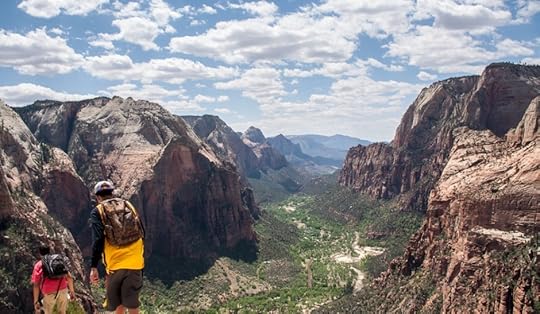
Angel’s Landing, Zion National Park. Photo: Author
You’d never guess by visiting that Springdale is a town of only 500 permanent residents; that’s because it sees around 2.5 million people passing through it every year.
What’s around
Zion National Park – It’s the 8th most visited national park in the US, for good reason. Most of the park is accessible only by foot, bike, or regular shuttles. Car access is strictly limited to reduce the impact of visitors.
Bryce Canyon National Park – It’s less than two hours away and you get to drive through the east section of Zion, which shouldn’t be missed.
Cedar Breaks National Monument – This is a 3-mile-wide/half-mile-deep natural amphitheater on the western end of the Colorado Plateau.
Mountain biking trails – There’s so much great riding in the area, including Gooseberry Mesa and the J.E.M. trail.
Where to eat and drink
There are a lot of dining options. This is by no means an exhaustive list.
Breakfast and lunch
Cafe Soleil – My go-to for breakfasts. Their Superfood Green Salad is an amazing mix of kale and greens and cabbage and berries and nuts and…too much to list. Just try it. This place was also local-residents-approved and is gluten-free friendly.
Ethnic cuisine
Thai Sapa – It’s a bit of a fusion restaurant, not straight-up Thai food. I recommend the “thaijitas.”
Fresh food on the go
Sol Foods Supermarket – There’s a great deli at the back to get fresh sandwiches to take with you on your day trips. Also a nice selection of freshly baked goods.
Brewpub
Zion Canyon Brewing – They’ve been handcrafting ales since 2006.
Dinner
Whiptail Grill – Tex-Mex and Asian fusion in an old, converted gas station.
Bit & Spur Restaurant and Saloon – Along with a great-looking menu, they have Southern Utah’s largest selection of microbrews.
Oscar’s Cafe – A locals’ favorite.
More handy resources
Where to get outfitted – There are lots of oufitters in town to rent gear for hikes like the Narrows in Zion. My partner and I went with a guide from Zion Adventure Company on a canyoneering expedition just outside the park. As it was a wet canyon, we were outfitted with dry suits, dry bags, and coveralls and were guided through a spectacular canyon that only ZAC had access to. (Watch the video.)
Where to connect with locals – Community centers are a great hub in any location to plug into the local scene. I took some yoga classes at the Canyon Community Center and struck up a nice connection with the teacher and other students.
2. MOAB
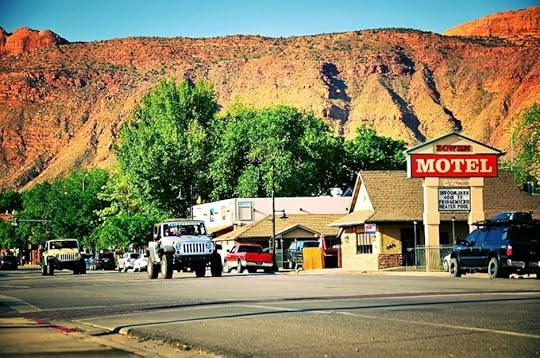
Photo: faungg’s photo
The Moab of Edward Abbey’s days is long gone, but I loved it when I was there this past April. There’s a vibe of adventure that emanates from the visitors in town, and it’s the prime location to base yourself for many of Utah’s most iconic desert adventures: mountain biking, hiking, rock climbing, canyoneering, river rafting. All that, and the street parking is free.
What’s around
Arches National Park – Huge rocks balancing on delicate perches, slot canyons, natural formations that seem to defy physics. There are lots of easily accessible views, but also the opportunity to get off the beaten path and away from the crowds. Whatever you do, don’t miss Delicate Arch.
Dead Horse Point State Park – 2,000ft sheer sandstone cliffs drop to a valley far below that contains the winding Colorado River. For hiking and biking, this is a great place to get away. The Intrepid Trail system has something for everyone, from green circles to black diamonds.
Canyonlands National Park – Island in the Sky, the Needles, the Maze. From most accessible to least, these three distinct regions of the park offer travelers of all physical and survival abilities plenty of adventure.
Slickrock Trail – Slickrock is what the pioneers of the area called this type of rock, because their shoed horses kept slipping on it. Once you step foot or set tire to it, though, you’ll realize this is a complete misnomer. It grips like glue. The Slickrock Trail is a technically advanced route that draws mountain bikers from all over the world.
Colorado River – You’d be remiss to not see the alien-like landscape that is the Colorado Plateau from the water. If you’re not experienced enough to bring your own watercraft, book a tour with a local guiding company. Choose from half-day to multi-day adventures.

Atop the spire of Ancient Art, Fisher Towers. Photo: Tristan Higbee
Fisher Towers – 20 miles out of Moab via the scenic Highway 128 is this area of vertical sandstone walls, towers, and spires. Hikers can explore the area by foot; the more adventurous may want to climb one of the multi-pitch towers and yell your choicest celebratory obscenity from the top.
Indian Creek – Another rock-climbing haven, this one for the crack-lovers. Historians take note as well: There are lots of petroglyphs that date back as far as 1,500 years.
La Sal Mountains – If you’re in Moab in the dead of summer, this may be the place for you to cool off a bit. There’s a 60-mile loop that takes in Castle Valley (more rock-climbing opps here) and eventually enters national forest land.
Where to eat and drink
Fresh and organic
Moonflower Community Cooperative – One-stop shop for your whole and healthy foods. They have a fridge with ready-made sandwiches and salads that are great to-go for day trips out of town.
Breakfast / coffee
Love Muffin Cafe – Excellent espresso-based drinks and a tasty huevos rancheros.
Eklectica – A “quintessentially” Moab experience, according to local climbing guide Nate Sydnor.
Ethnic cuisine
Singha Thai — I ate here twice.
Sabaku Sushi — Nate lived in Seattle and San Francisco, two places no strangers to raw fish. He says it “measures up.”
Classic American
Milt’s Stop & Eat — Grass-fed, hormone-free beef and deadly shakes.
Finer dining
Desert Bistro — Gourmet Southwestern cuisine inside an old dance hall built in 1892.
More handy resources
Laundry – While you’re filling up your canteens, you can stop by Moab Laundry Express, located in the same complex as GearHeads. It’s 24 hours and has free wifi and a flatscreen TV.
Internet – Besides the laundromat, you can get free wifi at the Moab Tourism Center as well as at the Grand County Public Library (no password required). Some restaurants and cafes also offer free wifi.
Entertainment – Moab’s Backyard Theater is a great little outdoor venue just off Main Street. Free live bluegrass every Wednesday night!
Shade – It can be hard to find nice shady areas. Seek respite in grassy, treed Rotary Park where you can also play gigantic musical instruments that are permanently installed there.
Local-interest books and maps – Back of Beyond Books is an independently run bookshop that takes its name from the works of famed local author Edward Abbey (it’s from The Monkey Wrench Gang). The store is, says Nate, where “you’ll find the best selection of literature for local history, Colorado River history, maps, etc.”
Yoga – If you’re planning to do much hiking, biking, and climbing, a little yoga will go a long way for your well-being. Moab Yoga is the local studio, offering a variety of classes every day except Sunday. Drop in is $15.
Fresh local produce and crafts – The Moab Farmers’ Market takes place every Thursday in Swanny City Park. Lots of local vendors selling fresh produce, massages, local crafts, and the like.
3. SALT LAKE CITY

Photo: Ron Reiring
Driving through Utah is like exploring backcountry roads, even on the main highways. Except for SLC, that is. This major metropolitan area is definitely on a different scale from the rest of the towns on this list, but whether or not you’re a big city person, you can’t argue its proximity to some excellent nearby adventures, or its options in terms of culture and cuisine.
What’s around
Great Salt Lake Desert – To the west of SLC is the Bonneville Salt Flats, America’s answer to the Salar de Uyuni in Bolivia. It’s the largest of the salt flats in the region and home to many land speed records. It’s public, managed by the Bureau of Land Management (BLM), and visitors are free to attend any of the annual land speed events (e.g., World of Speed) as well as drive on the flats themselves.
Utah Lake State Park – At 96,000 acres, Utah Lake is the largest body of fresh water in the state. Lots to do here, including: fishing, boating, sailing, camping, hiking, wildlife watching, swimming, wakeboarding…you get the picture.
Flight Park State Recreation Area – If you want to take to the air, this is the place to do it. It’s known round the world as one of the best training sites for activities like hang-gliding and paragliding. Never tried it before? Take a course or go tandem!
Antelope Island State Park – A next-door nature respite from the hustle of the big city, there’s lots of single- and double-track mountain biking (21 miles of trails), boating and watersports, horseback riding, camping, and — in the winter — snowshoeing and cross-country skiing.
Big Cottonwood Canyon – Frequented by botanical lovers for its wildflowers and unique plant life, there’s ample hiking to be had here in the summer months, as well as rock climbing. Snowshoeing and skiing in the winter.
Where to eat and drink
Breakfast & brunch
The Park Cafe – Located in Liberty Park, it’s been around since 1984.
Cafe Niche – A community-focused restaurant with an “emphasis on supporting local farms, ranchers and food purveyors for the most flavorful ingredients around.”
Ethnic cuisine
Takashi – I’m always hesitant to have sushi this far away from a coast, but sometimes you just gotta have some raw fish, and Takashi does it right.
Oh Mai – I love Vietnamese food, almost as much as I love a good pun.
Food cart
If you’re into food carts, check out Tacos Hildago — one of the best.
Local breweries
There are several local breweries in SLC. The scene’s been expanding since 1986, which is when Wasatch Brewery opened.
Farmers market
Even in the winter SLC is home to a farmers market. The Winter Farmers Market runs every other Saturday through April. The Summer Market starts in June.
Cool things to do in SLC
Mormon Tabernacle Choir – They have five gold records, and two have received platinum status. MoTab’s legit.
Twilight Concert Series – For a different but equally impressive music experience, check out SLC’s TCS, which brings top-name national acts to downtown Salt Lake’s Pioneer Park on July and August Thursdays. Best part? Tickets are just $5!
Natural History Museum of Utah – Once you see what Utah looks like, you’ll likely want to understand how it came to look that way, as well as get a better understanding of the first peoples and animals (dinosaurs!) that inhabited this unique landscape.
Nightmare on 13th – If you’re visiting around Halloween, this is the spot. It’s one of Utah’s largest and longest running haunted houses.
The Wairhouse Trampoline Park – Got kids? Don’t have kids? Whatever, jumping on trampolines is fun. Not only that, but it’s fantastic for a healthy lymphatic system.
4. Escalante / Boulder

Bryce Canyon National Park. Photo: Author
I’m lumping these two tiny towns (that have a combined population of about 1,000) together because they’re less than 30 miles apart, share the same beautiful landscape and access to adventure, and are connected by one of the most dizzying roads I’ve ever driven on.
What’s around
Scenic Byway 12 – This mighty engineering feat traverses super rugged and isolated terrain, connecting Capitol Reef and Bryce Canyon National Parks. The almost 30 miles of it between Escalante and Boulder is stunning and includes the “Hogsback” — a section where the land drops off sharply on either side of the highway.
Lower Calf Creek Falls – A well-trekked hike located between Escalante and Boulder, in Grand Staircase-Escalante National Monument. The trailhead for the 6-mile hike to the 126ft waterfall is in the Calf Creek Campground. If you’re not camping there, it’s $2 to park.
Upper Calf Creek Falls – Much less visited is the upper tier of Calf Creek Falls, an 88ft waterfall. One reason it’s much less visited is because the trailhead is unsigned, making it difficult to find. If you’re keen, look for two large boulders on the side of the road between mile markers 80 and 81.
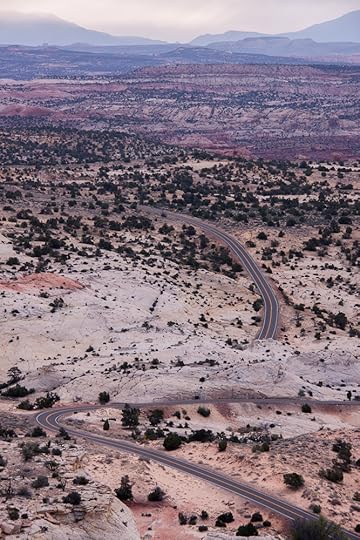
Scenic Byway 12. Photo: Author
Capitol Reef National Park – The defining feature of this park is the Waterpocket Fold, an almost 100-mile-long monocline, which translates to 100 miles of rugged backcountry adventure options. The history of the Mormon pioneers who settled this wild area in the 1800s is very interesting.
Bryce Canyon National Park – The landscape of Bryce Canyon is unmistakable. Bright red hoodoos shoot up from the canyon floor; get up close and personal on a hike.
Grand Staircase-Escalante National Monument – At 1.7 million acres you won’t be taking it all in, but it’s home to varying landscapes — canyons, mesas, buttes, pinnacles — explorable by vehicle and on foot.
Where to camp
The Calf Creek Campground is one of the most scenic campgrounds I’ve ever stayed at. It sits at the bottom of a big cliff along the creek and is where the Lower Calf Creek Falls trailhead is. There are 14 first-come, first-served sites at $15 per night.
Where to eat and drink
In Boulder
For a town of around 200 people, Boulder has surprisingly good cuisine. Hell’s Backbone Grill serves up produce from its own organic farm and Boulder-raised, grass-fed and -finished lamb and beef. The Burr Trail Grill and Outpost Store is right next door, with local arts and crafts and also an espresso bar.
The Kiva Koffeehouse is about 20 minutes outside Boulder and close to the Calf Creek Campground. It’s one of those you-should-stop-and-check-this-out places, if nothing else than for the building and its setting. It’s a beautiful circular structure made out of massive ponderosa pine logs and lots of glass to overlook the landscape.
In Escalante
The Escalante Outfitters Cafe has, according to my partner, the best gluten-free pizza crust. I do eat gluten and tried a slice and thought it was excellent. That’s saying a lot.
Where to shower and do laundry
In Boulder
The Hills and Hollows Market — where you can also get fresh, organic, and fair-trade foods, as well as gas — offers showers for 5 bucks. Ask at the counter.
In Escalante
Canyons of Escalante RV Park has very nice laundry and shower facilities. They also rent cabins.
5. Kanab
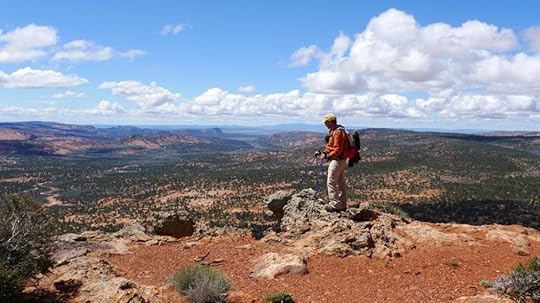
Elephant Butte, just west of Kanab. Photo: slashvee
Perhaps the best situated for access to several national parks, state parks, and monuments, Kanab is also known as “Little Hollywood” because it’s been the backdrop for many a Western film and TV series.
What’s around
Zion National Park – Just 40 minutes away.
Bryce Canyon National Park – Around 1.5 hours away.
Grand Staircase-Escalante National Monument – Close access to Cottonwood Canyon Road, a dirt track which takes you into the heart of the monument (high-clearance vehicles recommended; impassable in wet weather).
Coral Pink Sand Dunes State Park – 20 miles from Kanab, these unique sand dunes are the result of eroding Navajo sandstone. Hiking and off-road motoring are popular here.
Buckskin Gulch – Located in the Paria Canyon-Vermilion Cliffs Wilderness Area. At 21 miles, it’s considered the longest slot canyon in the world. Adventurers canyoneer this route in two days. Do not attempt if chance of rain!
Coyote Buttes South – Accessible from the Cottonwood Cove Trailhead just east of Kanab, this is an alternative to visiting the hard-to-get-lottery-permits-for the Wave. Permits are required and can be purchased at the Grand Staircase-Escalante National Monument visitor center in Kanab.
Where to eat and drink
Rocking V Cafe – Open daily from 11:30am to 10pm, it has an eclectic menu. Can be considered on the pricey side.
Escobar’s Mexican Restaurant – If you’re up for a late breakfast, they open at 11am and serve huevos rancheros, among a few other choices. Be quick though — breakfast ends at noon.
Other points of interest
Little Hollywood Movie Museum – Check out some of the Old Western movie sets (and more) that have been preserved here. Admission is free.
Best Friends Animal Society – There are four free tours per day of the sanctuary, which has a No Kill Mission.

This post was proudly produced in partnership with Utah, home of The Mighty 5®.

July 16, 2014
Love and occupation in the West Bank
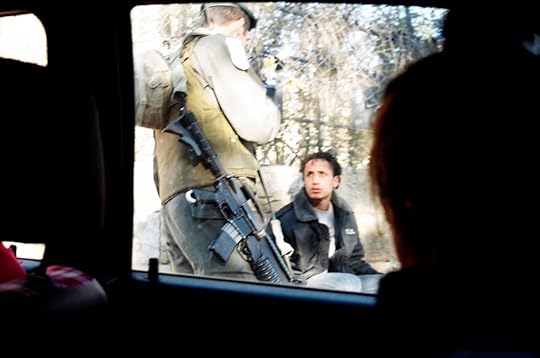
Photo: Kashfi Halford
I’VE BEEN WORKING WITH HAIFA KOLEITAT, MatadorU student and Matador Network contributor, on a new piece, “Enter the Occupation.” She is in the West Bank at this time. About a week ago, I hadn’t heard from her and asked her if she was okay. Here is her response, followed by our exchange:
Haifa: “Is it disrespectful if I say no, I’m not … I don’t mean to be. My whole body hurts …”
I asked her what she needed.
Haifa: “I want to finish the piece I sent you last week. Everything is happening so fast that it feels like blurred lines, and I don’t know if I have done any justice. My words feel useless when there is so much death and destruction; who needs stories, when what we need is a way to fight back and defend ourselves, right now? I feel useless. If I see any more dead bodies with open eyes and frozen looks of fear on their bloody faces, I think I might never feel again. Because it’s starting to just feel numb. When is it going to stop. We have no military force, no sophisticated weapons and aircraft. No protection or intervention from the outside world.
“How do you go to war with a people you are occupying, living essentially in an open air prison with no protection and no way to fight back? This is genocide, Mary …”
I didn’t hear from her for 4-5 days. I wrote three times and there was no reply. I saw videos of the bombings. I read of the people of both sides cheering when an air-strike hit. Today I wrote again and asked her where she was.
Haifa: “Mary, we are in the West Bank. We are going to get out. I know the piece I had sent you needed some changes — I know it is not perfectly written. but can we see to go ahead and have it published at Matador? There is just no time, and I will follow it up with what has happened afterwards, what it has really been like. Let them know we are dying over here. It is a shame to be writing meaningless irresponsible lists of what to do around the world, when the people in those very places are suffering! There are real stories to tell. Please, go ahead with it. I don’t need it to be published anywhere else, I just need to reach someone, anyone. I am so sorry.”
“I’ll work to make this happen,” I wrote.
She answered: “Even if you can include commentary of your own, of what you know of me — of what I’m asking you to do now. We can do this together, and I think that will speak louder than polishing this piece.”
Here is the unpolished piece — a raw chunk of true mineral if you will — a raw cry.
– Mary Sojourner
* * *
Enter the Occupation
“Do you see anything?” Your legs are weak and trembling. For the last week, they’ve waged nightly raids throughout entire cities and villages, and in the camps. They’re here tonight.
“Just a flash bomb.” A kidnapping started this. But this morning the occupation shot and killed a 13-year-old boy, in the chest. He’s the third dead.
You are more scared for him than anything. They’re violent and they fire indiscriminately at the men. You pray to never hear their breath at his door. “Stay away from the windows,” you tell him. You hate the way he protects you. His gentle eyes and loving hands. His reckless heart. When he tells you everything is okay, you know that maybe it’s not. And you know he is more than willing to die. For you, for his family. For dignity.

Photo: Rusty Stewart
“I would love to see you write about daily life in a war zone — because so many people need to wake the fuck up.” This is what a woman recently wrote to me. And she’s right, but this isn’t a war zone. This is everyday life under a brutal and perpetual military occupation. Let me explain:
This life is going for a walk with the man you’re in love with in the night, under a beautiful sky; with butterflies in your stomach, because he’s holding your hand and you had spent the whole day together. It’s the cool night air and the way the breeze traces your hair to your lips. It’s the way he looks at you as though he’d never looked at anybody before in his life.
And then it’s the echo that follows the breeze, and you realize the breeze had come suddenly and from nowhere. And the echo becomes a vibration, and it sounds numbingly the way you can sometimes hear your heartbeat in deafening silence. These are helicopter blades, and it snakes through the valley below — unmarked and as black as the night; built to be heard and not seen. It’s holding his hand a little bit closer now, but for all the wrong reasons. It’s being left with only the sound of your breath after you had stopped breathing for a while. And the black, unmarked helicopter with blades so heavy it’s as though they’ve cut a swath through the air in slow motion, fades into the darkness. Just like that, and you continue home.
On those careless days that you just feel weightless and in love with life, this life is stealing your mother’s car as she thinks you’re using it for school, and instead you’ve conspired a road trip with two of your best friends (although by most standards, it’s not much of a road trip, because you’re restricted to a military-occupied territory that is barely 3,500 square miles — not to mention the inextricable web of settlements, walls, borders, and barriers).
And checkpoints. So, it’s having spent the day feeling untouchable, because you’ve got your friends and the naïve freedom of the open road. It’s running through the narrow streets and corridors of old cities; exploring abandoned mosques and what once were the homes of great writers amidst the world’s holiest lands. It’s driving to the top of the highest mountain and balancing on the edge as the three of you sit at the overlook and count more lit-up minarets than stars in the sky (you lost count at 26). It’s the warm glow of the massive and dense network of houses and buildings and camps below.
And when you’ve lost track of the time and you’re already going to have to lie to your parents about where you’ve been all day, and you’re wildly happy and exhausted about it all, this life is being stopped at a checkpoint. Someone threw a Molotov cocktail at a car or a bus or a taxi — or something — full of settlers. And so, the occupation forces are waving their guns in your face and your friend’s face, and in the face of the girl you love. And they confiscate the keys to your car, place them on the roof and make you wait like this. Your friend’s got a medical problem, and so you explain the situation to one of the soldiers and ask if it would be okay if he could just use the bathroom at the side of the road. But the soldier looks at you, dead in the eyes and stone-faced.
Then hours later, mostly men, who are stopped behind you, begin to climb out of their vehicles — taxis and trucks — and they lay their prayer mats down and begin to pray, at the side of the road. At the checkpoint. Eventually they allow your friend to relieve himself — where they can see him. You look in your rearview mirror, to the girl you love. She’s smiling, because there’s no way you’re not going to get caught tonight. She reaches through the small space of your seat and the door and holds your hand — this is life.
It’s those days you all spend together barbecuing for no good reason at all. And the biggest problem is, “Do we have enough meat?” Or, “Did anyone buy marshmallows to make s’mores?” And you’ve built the grill out of stones that are just laying around — and not because people don’t have grills here (as maybe many people would perceive from the way your little country is portrayed in the news), but because it was just more fun this way. And the guys help the girls in the kitchen, and nobody really wants to touch the raw meat, so everybody dives in with childlike hands and twisted noses and whines and gargles and laughter.
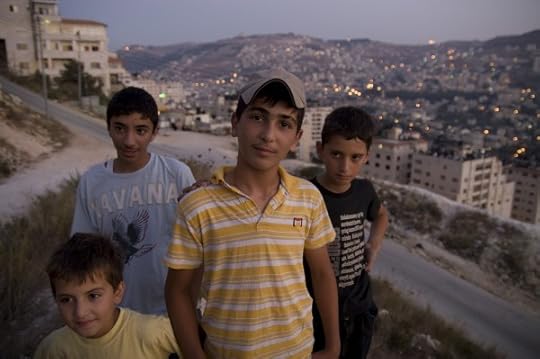
Photo: rpb1001
And then, it’s being too tired to eat, because you’ve been running around all day to prepare this feast and you’ve all laughed too much and talked too much. A few of you have fought too much, and forgiven. But it’s deciding to walk the four miles home anyway, over the mountains, because happiness is like being drunk. You guys even swear by God to your families that you saw a UFO that night, and you fall asleep because childlike innocence never really leaves any of us.
All too often, we internalize the occupation. We don’t think that this is an unordinary life. We kiss our families goodbye and go to school and to work. We flirt, and laugh, and dance, and sing. We write poetry on the walls. We fight and we cry. We bleed. We go out to the movies; we go out with our friends; we go out on dates. We meet our girlfriends and boyfriends on the lovers’ staircase; we hold hands on quiet streets. All the things of a normal life. It’s just that this normal life is often separated from our family and neighbors and friends and lovers, and schools and hospitals and farmlands and even water supply, by barbed-wire fences and walls that are in some places 25 feet high, with massive watchtowers and spotlights and guys (and girls) with guns, designed and trained to keep us out of our own land — and somehow imprisoned within it at the same time.
This normal life is being stopped late in the night with your teenage son after returning home from a long day of work. And the occupation surrounds your car. And they take your ID and your keys. Your son watches you — his father — being dragged out of the car by gunpoint, and for no good reason. They leave the boy in the car, and continue to search it with big nasty dogs. Imagine how that feels for a child. And then imagine how it feels as a father or a mother, for your child to see you dehumanized — you’re not a person in the eyes of the occupation. You’re an animal. You have no dignity. And then understand and digest that these occupation forces are mostly children themselves.
Children with big guns and an arsenal of weapons and armored vehicles, who have been taught that you bleed differently; that not all of your lives are worth even one of theirs. But you fight with stones and you fight with words and you fight just by living — you fight with everything that you have — because what you have is your life and your dignity and your love.
Forty-seven years of a hostile foreign military occupation. This is not a warzone — this is life.
I close my eyes; lower my head into my hands.
“Come here.” It’s what he says every time he pulls you into his arms. “Yallah. I promise you we’re safe.”
Sometimes this life is saying goodbye to the man you love, for months and years at a time, because this isn’t really your home and the occupation controls his borders.
And we go on. 

Matador Network's Blog
- Matador Network's profile
- 6 followers








